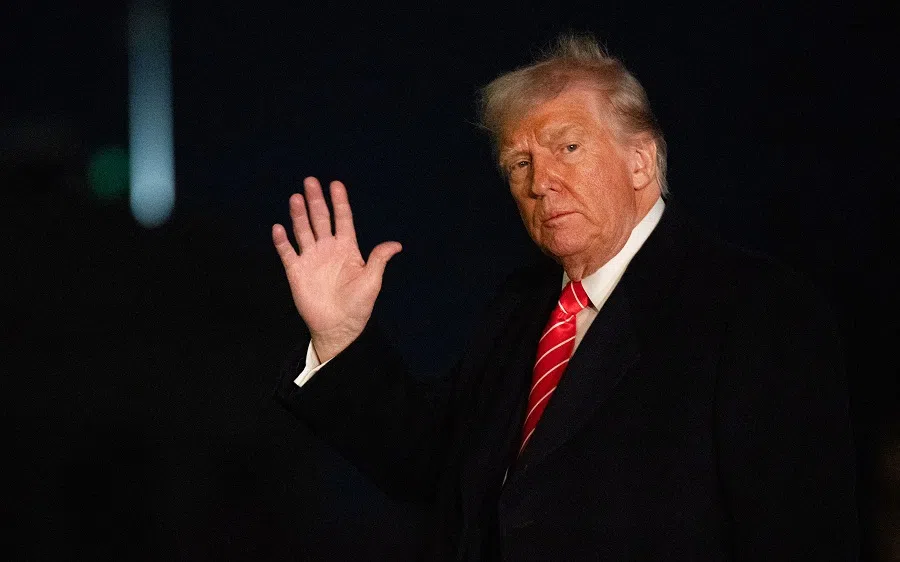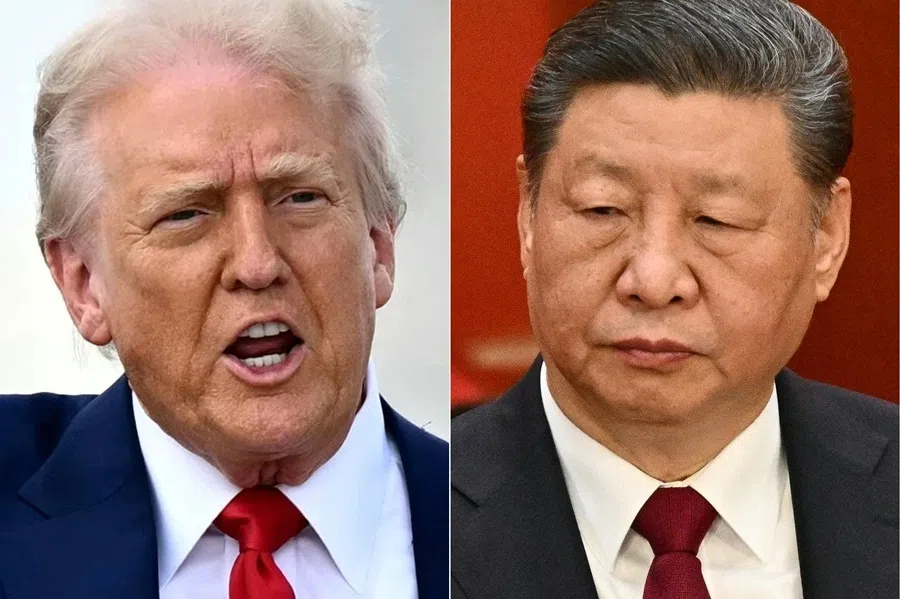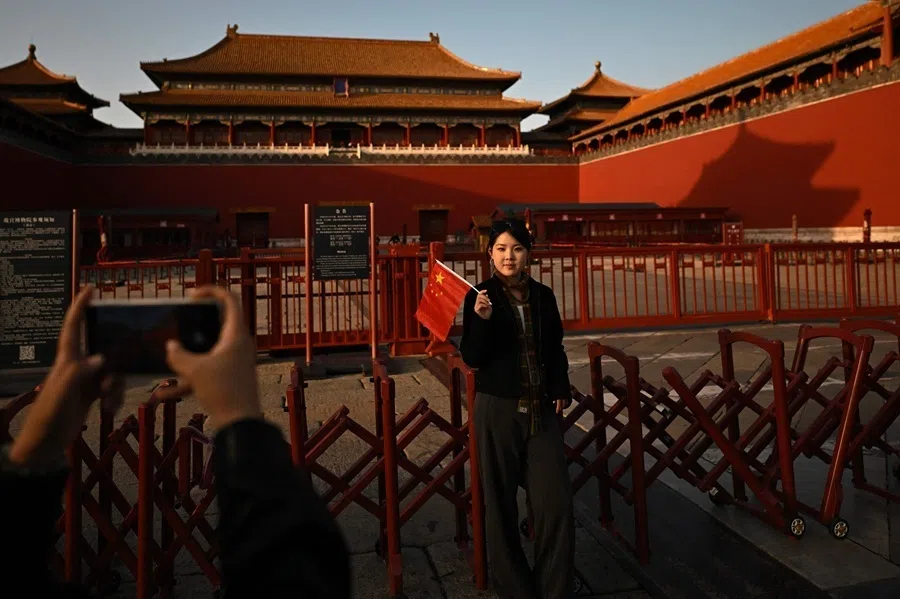US tariffs: Might makes right?
Trump’s tariff obsession is counterproductive, argues former journalist Goh Choon Kang, failing to address America’s economic woes while highlighting the “might makes right” power dynamics in international trade that undermine trade agreements.

US President Donald Trump has often proclaimed the word “tariff” to be the most beautiful word in the dictionary. In his view, imposing tariffs does not come with a cost but is able to bring about numerous benefits — almost like a panacea that can restore American manufacturing, force other countries to comply, attract foreign investment, create jobs, balance imports and exports, relieve the tax burden on Americans and reduce the fiscal deficit, among other things.
Of course, tariffs are not that magical. A tariff is essentially a tax that a country levies on imported goods from other countries to make these goods more expensive. This can protect domestic industries, but it is done at the cost of consumer choices. If domestic manufacturers have high production costs, it is still difficult for them to compete with cheaper foreign products even with tariffs and government subsidies, leaving consumers to bear higher prices.
Free trade agreements: a symbiotic relationship?
From a manufacturer’s perspective, a more affordable or profitable approach would be to relocate factories to regions with lower production costs, then ship the products back for sale. This is why multinational corporations exist. When production costs in developed countries (including wages, rents, taxes and so forth) become too high, many companies choose to relocate to developing countries to take advantage of cheap labour and tax benefits.
In the US, corporations wield significant political influence due to their substantial political donations. Hence, corporations put pressure on the government to sign free trade agreements with other countries, making it more convenient for their investments and factory setups in these countries. The North American Free Trade Agreement (NAFTA), signed in 1992 with Canada and Mexico, is a classic example. It came into effect in 1994, establishing the North American Free Trade Area. Before this, the US and Canada had signed a bilateral free trade agreement in 1988, which was later expanded to include Mexico.
Beyond these countries, many South American nations in the US’s sphere of influence have faced similar pressures, with non-compliant or uncooperative governments often being overthrown by coups.
The idea of establishing a North American Free Trade Area was initially proposed by then-President Ronald Reagan in the early 1980s, but he faced opposition from Canada and Mexico. By the mid-1980s, both countries had changed their stance; some have attributed this change to the economic rise of Japan, which exerted export pressure on both the US and Canada.
Canada’s and Mexico’s initial resistance was understandable because their economies were no match for the US; the removal of trade barriers and opening up of their markets to free competition was naturally disadvantageous for them. The US, however, promoted the concept of “symbiosis”, and suggested that the three geographically connected countries should also have an economically symbiotic relationship.

Negotiating free trade agreements is often challenging as each side seeks to protect its interests, making compromise difficult. Agreements are also usually complex, involving many minute details, which is why negotiations take many years.
However, it was unsurprising that Canada and Mexico eventually compromised with their powerful neighbour, the US. Beyond these countries, many South American nations in the US’s sphere of influence have faced similar pressures, with non-compliant or uncooperative governments often being overthrown by coups.
FTAs good for American businesses and consumers, but bad for employment
According to Matt Kennard, a British investigative journalist critical of “US imperialism”, the geopolitical strategy of the US runs parallel to the expansion of corporate interests. In his book The Racket, he pointed out that the US promoted NAFTA and the establishment of the free trade area to allow domestic companies to enter these neighbouring countries and reduce production costs, as these countries have more relaxed environmental and labour regulations.
By doing so, this allows US companies to sell products globally at lower prices. Meanwhile, American products can also flood the markets of both countries. Although businesses profited, the countereffect was that higher-wage US workers were replaced by cheaper Mexican workers.
... given that the US, Canada and Mexico have signed trade agreements, all actions should theoretically adhere to the agreement’s terms — how then can tariffs be unilaterally imposed? Does this not trivialise trade agreements?
US acceptance of China’s reform and opening up seems to be based on similar considerations. Opening the Chinese market was advantageous for American companies, and the massive influx of US and Western capital into China quickly turned it into the world’s factory. The result was a flood of cheap goods into US and Western markets, benefiting consumers but also causing significant unemployment among US workers.

Kennard argued that so-called free trade actually gave the US the freedom to dictate terms in trade relations, forcing other countries to create economic environments favourable to the inflow of American goods. This process of liberalisation allowed US companies to expand and profit greatly, but it also hollows out domestic industry and is a major cause of its trade deficit because imports are cheaper than domestic production. This is the problem the US currently faces. Hence, Trump thought tariffs could resolve the issue. He repeatedly claimed that tariffs would bring companies back to the US, and aimed to attract more investment by lowering corporate taxes.
Trump plays the victim while wielding the tariff stick
The most ironic aspect is Trump’s insistence that Canada, Mexico and other countries are taking advantage of the US. As the aforesaid analysis showed, the push for free trade or globalisation by the US was primarily to benefit its own corporations, leveraging its capital and technological advantages over other nations. Now, to claim otherwise seems somewhat absurd.
Moreover, given that the US, Canada and Mexico have signed trade agreements, all actions should theoretically adhere to the agreement’s terms — how then can tariffs be unilaterally imposed? Does this not trivialise trade agreements?
Taking the automobile industry as an example, Trump’s proposal to impose a 25% import tariff on Canadian and Mexican auto products is puzzling. He claimed Canadians “stole” the US car industry, but in reality, US auto companies took advantage of NAFTA’s tariff-free terms to set up factories in Canada and Mexico, bringing parts or finished products back stateside, forming an integrated market production model. This agreement was renegotiated during Trump’s first term under US pressure, resulting in a 2.0 version that provided more US access to Canadian and Mexican markets.
Ultimately, it is about wielding power and dominance, where the big outpower the small, and the strong bully the weak. The might makes right principle clearly exists in international trade as well — there is no reasoning with a bully.

This is a mutually beneficial trade arrangement and is clearly advantageous to US manufacturers, so how can it be said that Canada stole the US automobile industry? Similarly, claiming that other countries use tariffs to take advantage of the US is not factual. Ultimately, it is about wielding power and dominance, where the big outpower the small, and the strong bully the weak. The might makes right principle clearly exists in international trade as well — there is no reasoning with a bully.
Regardless of how overbearing Trump is, decades of globalisation and the division of labour have tightly interwoven world economies. No matter how much one tries to reverse globalisation, the era of US manufacturing supremacy is over.
More crucially, other countries have gradually developed their own advantages over the past decades, which undercuts American competitiveness and means that the American industry can no longer solely dominate. This is the real issue the US faces and the source of its current anxiety. Yet, these problems cannot be solved by waving the tariff stick and practising protectionism. Trade wars — though smokeless — can cause fatal harm to national economies and global trade, inflicting damage on both sides. The plain truth is: there are no winners in a trade war.
This article was first published in Lianhe Zaobao as “国际贸易中的强权和公理”.





![[Vox pop] Chinese parenting: Tough love or just tough?](https://cassette.sphdigital.com.sg/image/thinkchina/b95bd53631df26290df995775a40e36709bf8dc8e3759460276abd5c426b20b6)